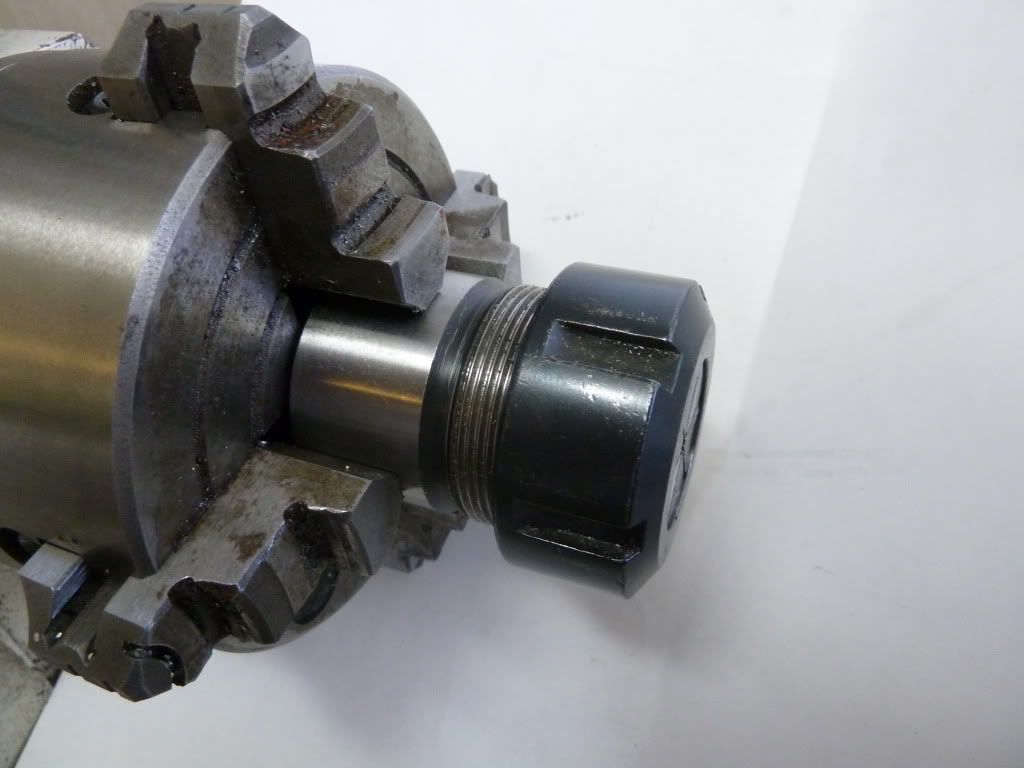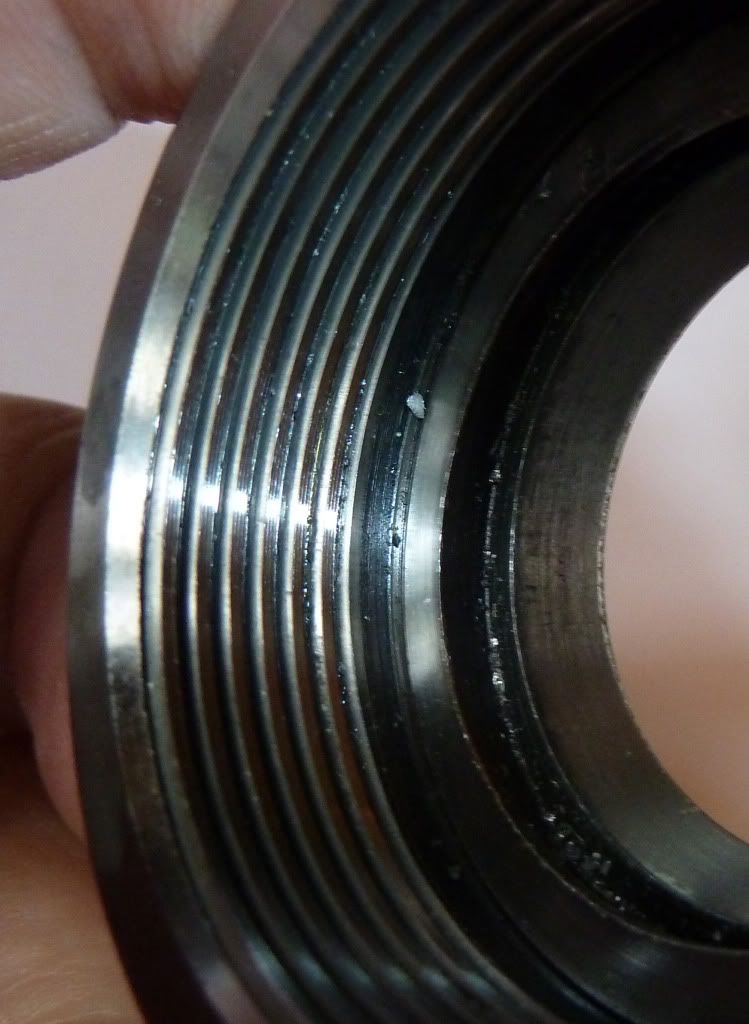My small 4 jaw lathe chuck wasn't holding some 3mm steel very well so I thought I would use the ER32 collet chuck from the mill, held in my 4" 4 jaw. So I align it central using the outside of the chuck as a guide. Insert collet and 3mm steel rod and check the runout. Its hopeless so I adjust the 4 jaw to centre and think thats that. Turn the required groove, loosen the ER32 chuck, advance the rod, tighten the collet nut, turn on lathe and the work is visibly off centre. Rins and repeat with 4 jaw. Advance rod, check with indicator, 21 thou runout ???
After lots of mucking about looking for invisible bits of swarf and trying to pin down the source of the eccentricity it appears to be a function of the ball raced collet nut. Problem pretty much disappears with non ball raced part around (0.4 thou variation).
So if you use one of the ball bearing type ER32 collet nuts, it may be worth checking it once in a while
Best Regards
picclock
After lots of mucking about looking for invisible bits of swarf and trying to pin down the source of the eccentricity it appears to be a function of the ball raced collet nut. Problem pretty much disappears with non ball raced part around (0.4 thou variation).
So if you use one of the ball bearing type ER32 collet nuts, it may be worth checking it once in a while
Best Regards
picclock






